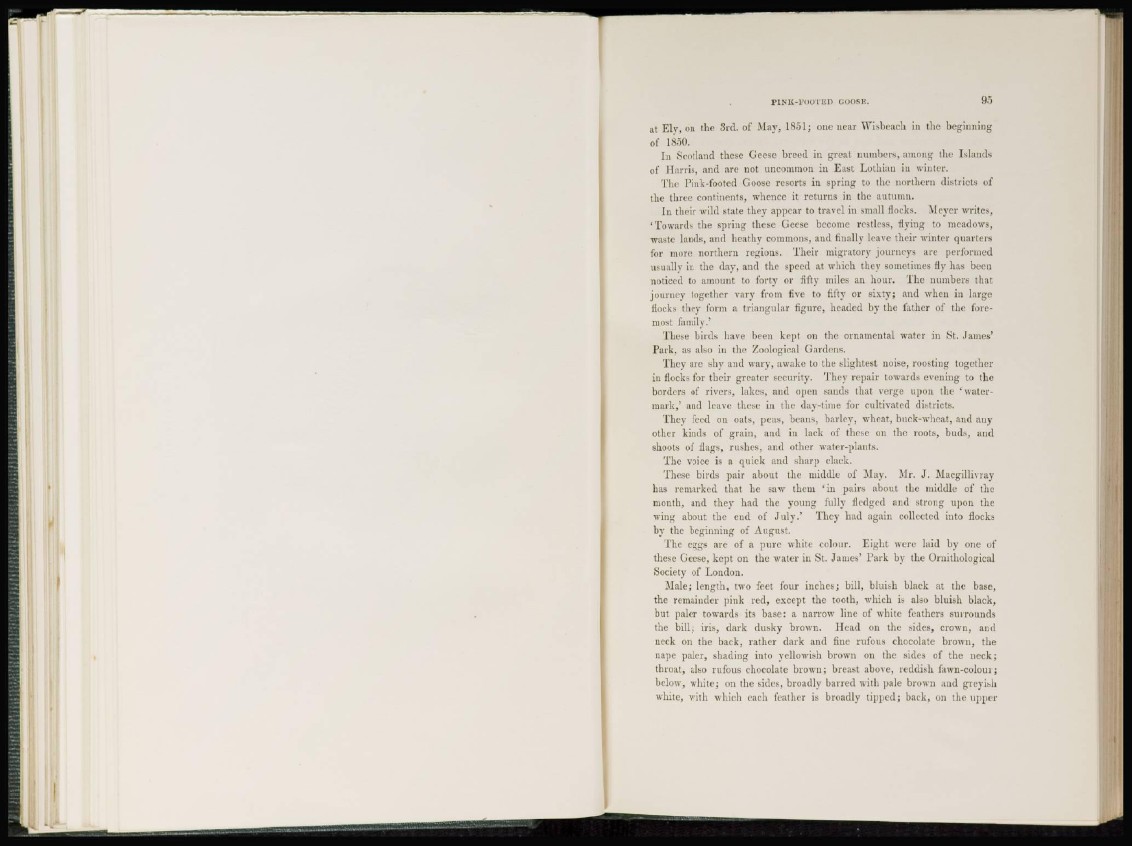
PINK-FOOTED GOOSE. 95
at Elv, on the 3rd. of May, 1851; one near Wisbeach in the beginning
of 1850.
In Scotland these Geese breed in great numbers, among the Islands
of Harris, and are not uncommon in East Lothian in winter.
The Pink-footed Goose resorts in spring to the northern districts of
the three continents, whence it returns in the autumn.
In their wild state they appear to travel in small flocks. Meyer writes,
'Towards the spring these Geese become restless, flying to meadows,
waste lands, and heathy commons, and finally leave their winter quarters
for more northern regions. Their migratory journeys are performed
usually in the day, and the speed at which they sometimes fly has been
noticed to amount to forty or fifty miles an hour. The numbers that
journey together vary from five to fifty or sixty; and when in large
flocks they form a triangular figure, headed by the father of the foremost
family.'
These birds have been kept on the ornamental water in St. James'
Park, as also in the Zoological Gardens.
They are shy and wary, awake to the slightest noise, roosting together
in flocks for their greater security. They repair towards evening to the
borders of rivers, lakes, and open sands that verge upon the 'watermark,'
and leave these in the day-time for cultivated districts.
They feed on oats, peas, beans, barley, wheat, buck-wheat, and any
other kinds of grain, and in lack of these on the roots, buds, and
shoots of flags, rushes, and other water-plants.
The voice is a quick and sharp clack.
These birds pair about the middle of May. Mr. J. Macgillivray
has remarked that he saw them ' i n pairs about the middle of the
month, and they had the young fully fledged and strong upon the
wing about the end of July.' They had again collected into flocks
by the beginning of August.
The eggs are of a pure white colour. Eight were laid by one of
these Geese, kept on the water in St. James' Park by the Ornithological
Society of London.
Male; length, two feet four inches; bill, bluish black at the base,
the remainder pink red, except the tooth, which is also bluish black,
but paler towards its base: a narrow line of white feathers surrounds
the bill; iris, dark dusky brown. Head on the sides, crown, and
neck on the back, rather dark and fine rufous chocolate brown, the
nape paler, shading into yellowish brown on the sides of the neck;
throat, also rufous chocolate brown; breast above, reddish fawn-colour;
below, white; on the sides, broadly barred with pale brown and greyish
white, with which each feather is broadly tipped; back, on the upper